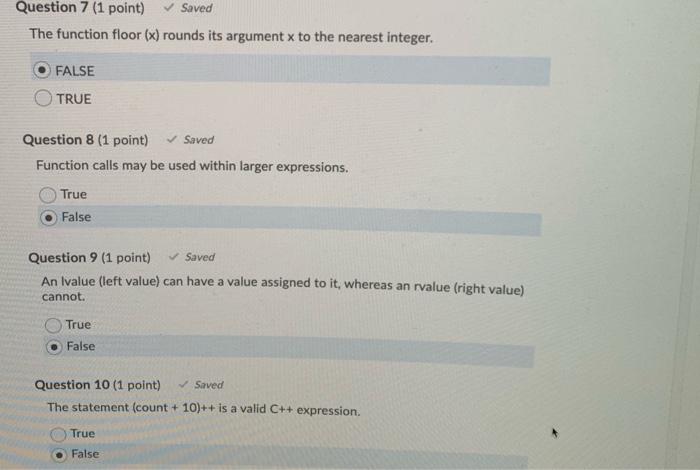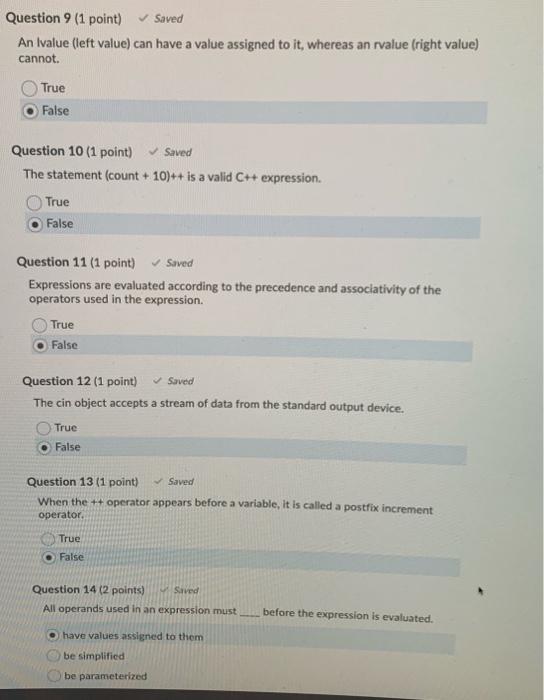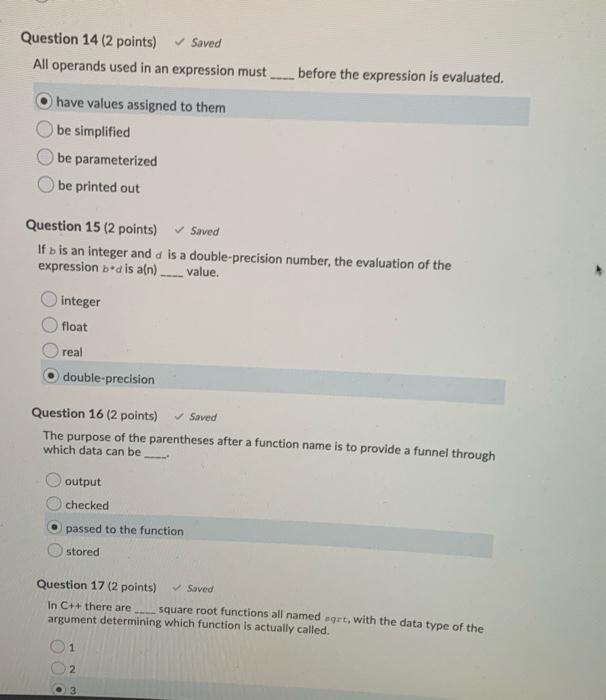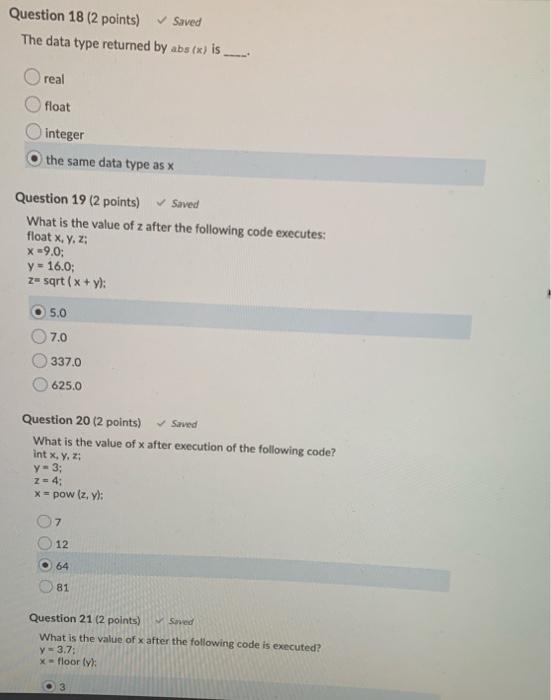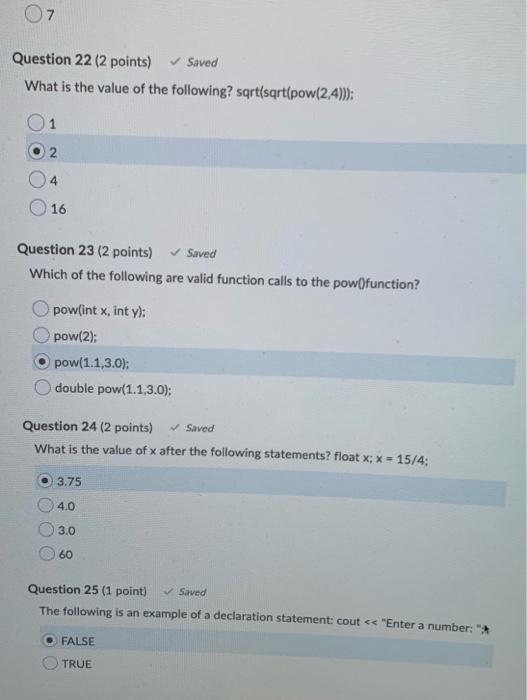Question 7 (1 point) Saved The function floor (x) rounds its argument x to the nearest Integer FALSE TRUE Saved Question 8 (1 point) Function calls may be used within larger expressions. True False Saved Question 9 (1 point) An Ivalue (left value) can have a value assigned to it, whereas an rvalue (right value) cannot. True False Question 10 (1 point) Saved The statement (count + 10)++ is a valid C++ expression. True False Question 9 (1 point) Saved An Ivalue (left value) can have a value assigned to it, whereas an rvalue (right value) cannot True False Question 10 (1 point) Saved The statement (count + 10)++ is a valid C++ expression. True False Question 11 (1 point) Saved Expressions are evaluated according to the precedence and associativity of the operators used in the expression. True False Saved Question 12 (1 point) The cin object accepts a stream of data from the standard output device. True False Saved Question 13 (1 point) When the ++ operator appears before a variable, it is called a postfix increment operator, True False Question 14 (2 points) Seved All operands used in an expression must before the expression is evaluated. have values assigned to them be simplified be parameterized Question 14 (2 points) Saved All operands used in an expression must before the expression is evaluated. have values assigned to them be simplified be parameterized be printed out Question 15 (2 points) Saved If b is an integer and d is a double-precision number, the evaluation of the expression bed is aln) --- value. integer float real double-precision Question 16 (2 points) Saved The purpose of the parentheses after a function name is to provide a funnel through which data can be output checked passed to the function stored Question 17 (2 points) Saved In C++ there are square root functions all named art, with the data type of the argument determining which function is actually called. 1 2 Saved Question 18 (2 points) The data type returned by abs(x) is real float integer the same data type as x Question 19 (2 points) Saved What is the value of z after the following code executes: float x, y, z; x 9.0: y = 16.0; za sqrt(x + y): 5.0 7.0 337.0 625.0 Saved Question 20 (2 points) What is the value of x after execution of the following code? int x, y, z: y = 3; Z= 4; x = pow (z. Y): 7 12 64 81 Question 21 (2 points) Saved What is the value of x after the following code is executed? y = 3.7 x-floor lyt: 7 Question 22 (2 points) Saved What is the value of the following? sqrt(sqrt(pow(2,4)); 01 2 4 16 Saved Question 23 (2 points) Which of the following are valid function calls to the pow(function? O pow(int x, int y: pow(2); pow(1.1, 3.0); double pow(1.1,3.0); Saved Question 24 (2 points) What is the value of x after the following statements? float x x - 15/4: 3.75 4.0 3.0 60 Question 25 (1 point) Saved The following is an example of a declaration statement: cout
